Llanberis hydro-power plan: Call for MoD to clean site
- Published
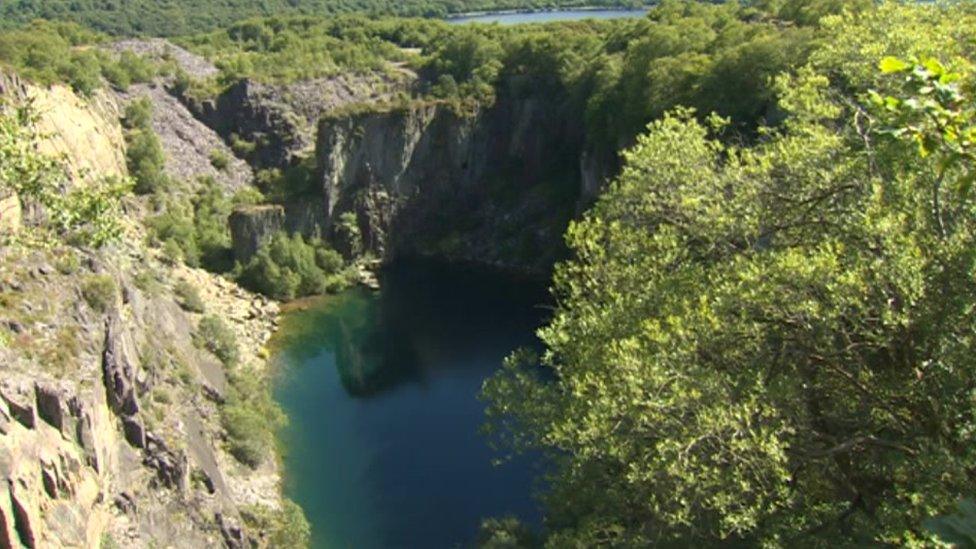
Opponents of a planned £100m hydro-electric scheme at a disused Snowdonia quarry have urged the Ministry of Defence to first clean the site.
Snowdonia Pumped Hydro (SPH) hopes to build a pumped-storage facility at the former Glyn Rhonwy quarry in Llanberis, in the area of a former RAF bomb store.
A previous report suggested unexploded munitions may remain buried there with campaigners also concerned about nerve gas contamination.
The MoD said it had made the site safe.
The secretary of state for energy and climate change is expected to decide on the proposal for a 600 MWh hydro-electric pumping station in the next fortnight, after a six-month investigation by the Planning Inspectorate.
SPH wants to build the facility in one of the site's quarry holes - after pumping out the water and discharging it into nearby Llyn Padarn - which worries some campaigners.
During the Second World War the area was known as RAF Llanberis and was used as a bomb store and School of Explosives.
It was later used for the post-war storage and disposal of thousands of tonnes of munitions - including bombs, bullets and incendiary devices - before being cleared by the RAF in a six-year project in the 1970s.
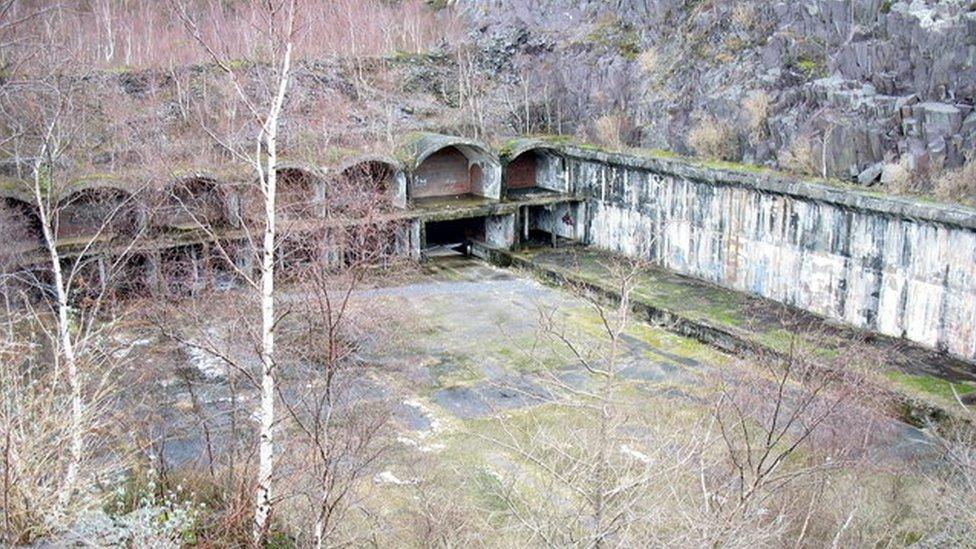
The former bomb store at Glyn Rhonwy, Llanberis
An SPH-commissioned report said 14,000 tonnes of bombs filled with Tabun nerve gas were temporarily stored there after being taken from Germany - but were moved elsewhere and later disposed of at sea.
However, campaigners have told BBC Radio Cymru's Manylu programme their own research shows the Gwynedd council-owned site was more dangerous than previously thought.
They have found an official document showing one member of the 1970s clean-up team was injured by mustard gas while clearing the quarry hole which would be part of the proposed development.
And following a Freedom of Information request, the MOD has confirmed several mustard gas bombs were found there in the 1970s.
Ann Lawton, from Concerned About Glyn Rhonwy, said: "From the beginning, SPH have said there weren't any chemical weapons there and, only after we showed our evidence, they recognised that there had been some there."
She said the MoD had two conflicting reports about whether chemicals found at the site were "dumped" there or taken to a research base.
The group is also concerned residue from munitions burnt on site could pollute Llyn Padarn, a Site of Special Scientific Interest, and a popular area with locals and tourists.
"It needs a proper clean-up, done by the MOD with their facilities, and it doesn't want doing with accountants and shareholders breathing down their neck," campaigner Jeff Taylor, who also suggested the MoD pay for the clean-up, said.
A spokesman for SPH said the only evidence of mustard gas was the injury to the soldier after a slight spillage from a damaged bomb found during the 1970s clear-up.
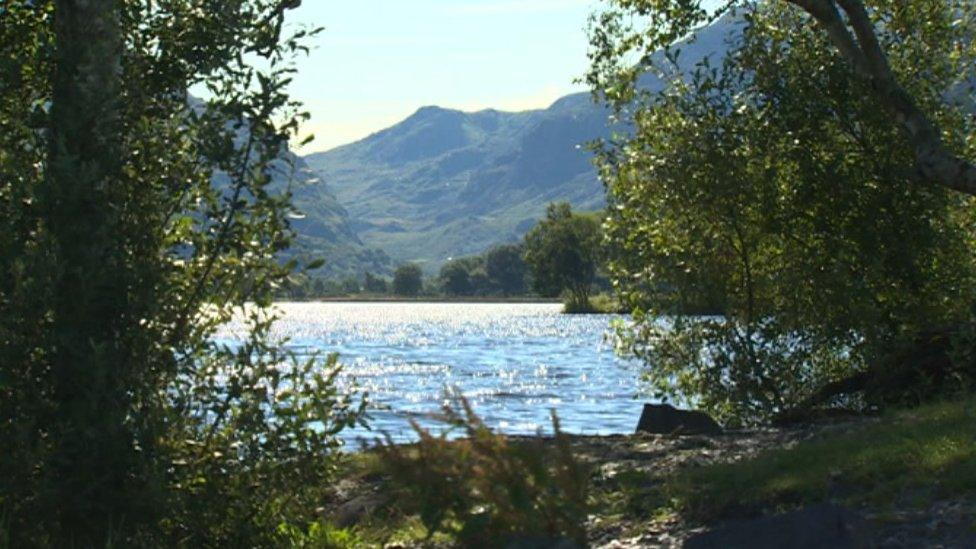
Llyn Padarn is said to be a "vitally important natural asset for the area"
The firm said only six bombs were found at that time and there was no evidence to suggest further bombs were likely to be present.
SPH said if any unexploded ordnance was found on site during development, it had agreed with the authorities to pay for a leading specialist company to safely dispose of it.
Last month, Natural Resources Wales granted a discharge licence to the company.
'Clear of ordnance'
Sian Williams, from NRW, said they would be monitoring the water conditions throughout the project to protect Llyn Padarn.
Councillor Trevor Edwards, who represents nearby Llanberis, welcomed the prospect of the 300 jobs that will be created while the site is developed and the 30 long-term positions once its completed.
He said there was nothing to worry about.
A spokesman for the MoD said: "The Llanberis quarry site was assessed as being clear of ordnance following a thorough examination in November 1975.
"A more recent study of all UK MoD sites, which may have stored mustard gas, concluded that no further remedial action was needed at the former RAF Llanberis site."
Manylu is on BBC Radio Cymru at 12:30 GMT on Thursday and on Sunday at 16:00.
- Published13 April 2016

- Published18 July 2015
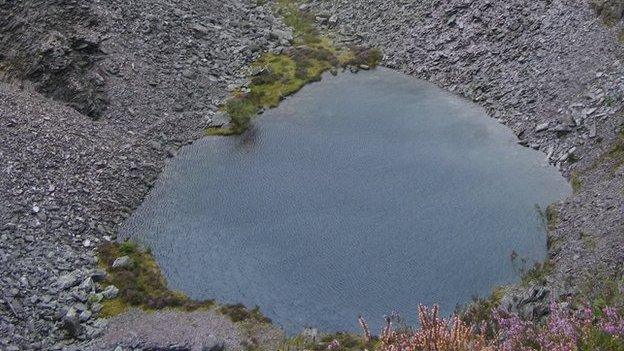
- Published2 September 2013
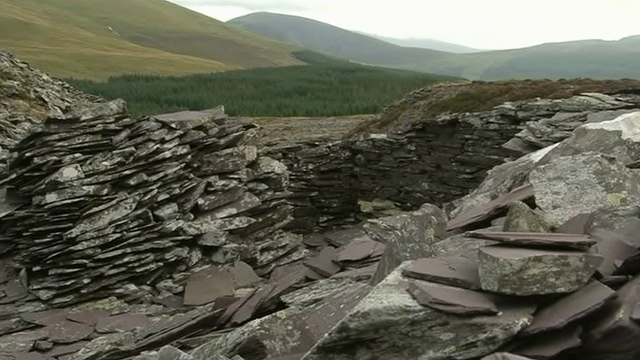
- Published1 August 2016
